Estudo de Caso e o Poder do SEO Semântico
Tenho feito testes e estudos em Web Semântica desde 2015 quando li pela primeira vez o fundamental livro Google Semantic Search. Se você quiser ainda acha o fichamento que eu fiz no Medium.
Você pode ler meus textos no Medium, no Linkedin ou aqui no Blog.
Mas o que eu quero mostrar é o mais recente teste que fiz, dessa vez usando duas ferramentas que eu gosto muito, tenho bastante conhecimento.
Geralmente recomendo para todo mundo que está criando um projeto de conteúdo e elas são o WordPress e um plugin chamado Wordlift.
Sobre o Wordlift eu já escrevi quando falei que “As ferramentas certas para o SEO semântico são estratégias e táticas.” mas resumindo para você esse plugin analisa o seu conteúdo e identifica entidades (entities) e as organiza nas quatro categorias básicas: Quem, O quê, Quando e Onde. Depois ele automatiza a marcação do artigo que escreveu adicionando informação contextual, com links internos para um vocabulário semântico, que é atualizado a cada novo conteúdo.
A criação de novas entidades que vão enriquecer o vocabulário do seu site, fortalecendo a sua relevância no seu mercado é bem simples de ser feita.
E foi usando essa estratégia: conteúdo no WordPress com marcação semântica via Wordlift que cheguei ao resultado que agora mostro a vocês!
Mas antes…
Quero deixar aqui uma apresentação que fiz no dia 11 de setembro de 2021 no canal do Youtube do grupo IA Biblio BR, com o tema “Semântica na Prática”. A minha apresentação foi mostrando exatamente o uso prático da semântica no SEO usando o WordLift.
Caso de Estudo: Bezerra de Menezes.
Eu frequento uma casa espírita aqui na minha cidade, Porto Alegre, no Rio Grande do Sul. Sou voluntário na área de comunicação e comecei a ajudar com o site, que é feito em WordPress. Já que tenho tanta experiência resolvi ajudar nessa área.
Foi quando eu conheci o pessoal do Wordlift que me veio a ideia: será que eu não consigo otimizar o site da casa usando o plugin?
Fiz a instalação do Plugin e comecei a criar as entidades que iriam compor o domínio semântico do site. Fiz um pequeno planejamento e resolvi cerca o nome “Bezerra de Menezes” para essa otimização semântica.
Mapeei todos os conteúdos já criados que poderiam ter entidades relacionadas ao Bezerra de Menezes e a Casa Espírita Bezerra de Menezes.
Encontrando entidades, otimizando vocabulário
A maior parte do trabalho realmente é otimizar os vocabulários criados pelo plugin, o Wordlift.
O conteúdo criado para o site não é feito por mim, existem pessoas que escrevem nele. Eu só pego o conteúdo escrito e, usando o plugin, identifico pessoas, lugares, acontecimentos, livros que são de interesse das pessoas que procuram uma casa espírita e o plugin faz o resto do trabalho.
Através do Machine Learning e do PNL o sistema faz todo o processo facilitando a minha vida na otimização.
Depois disso eu entro em todos os verbetes que compõem o vocabulário do site e vou otimizando um por um.
Já percebi que quanto mais rico o verbete fica, melhor ranking ele alcance. E o exemplo que vou lhe dar é exatamente o do Bezerra de Menezes:
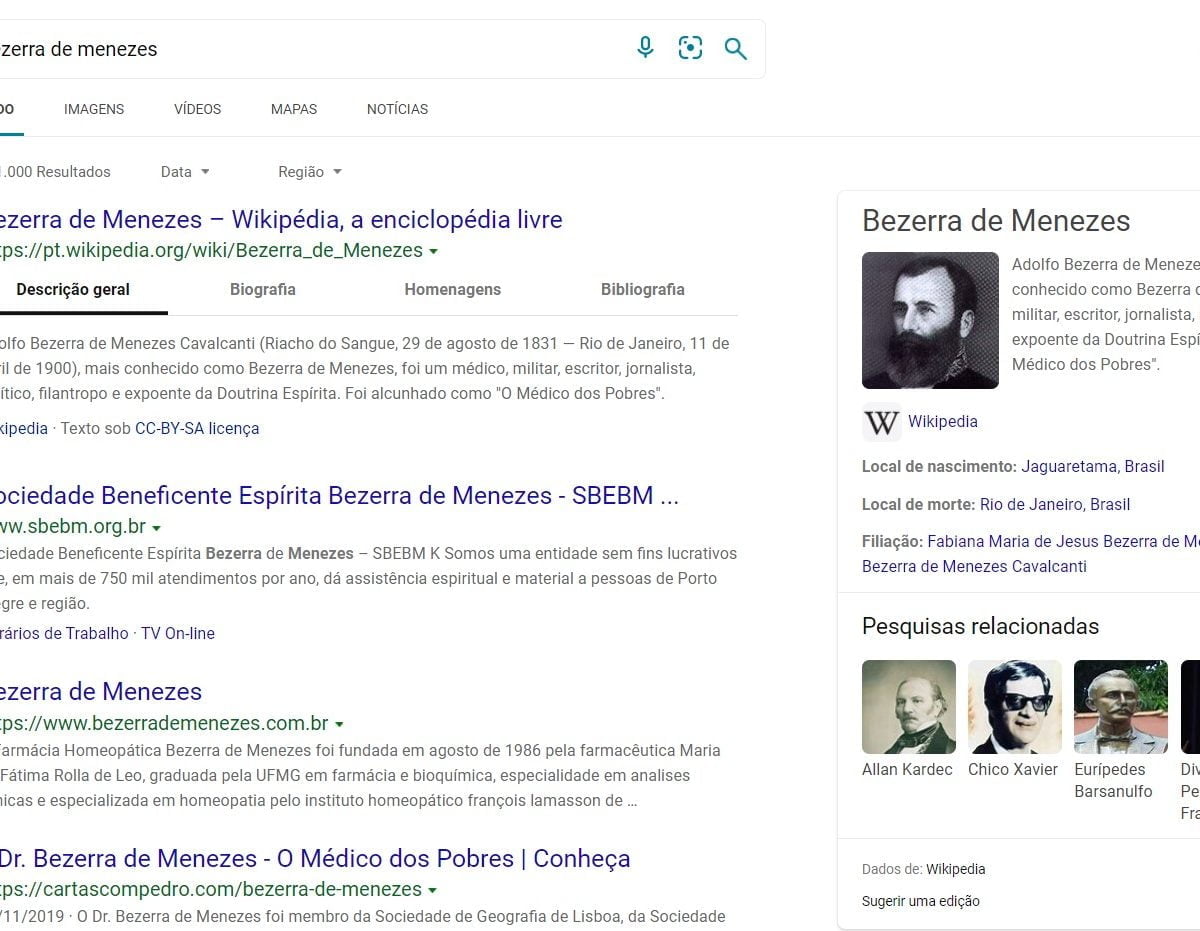
Este resultado de uma busca feita no navegador Edge da Microsoft, usando o Bing, mostra o resultado para o termo “Bezerra de Menezes”.
Aqui o primeiro resultado é da Wikipedia, para a página que fala sobre o médico e espírita, Dr. Bezerra de Menezes.
E o Snippet lateral também, usando o conteúdo da Wikipedia. Já o segundo lugar (apontando para o site), o quarto (com o mapa para o local), o quinto (com os horários e o sexto (com o Facebook) são todos do site otimizado semanticamente.
Vamos agora a uma busca feita usando o Google.
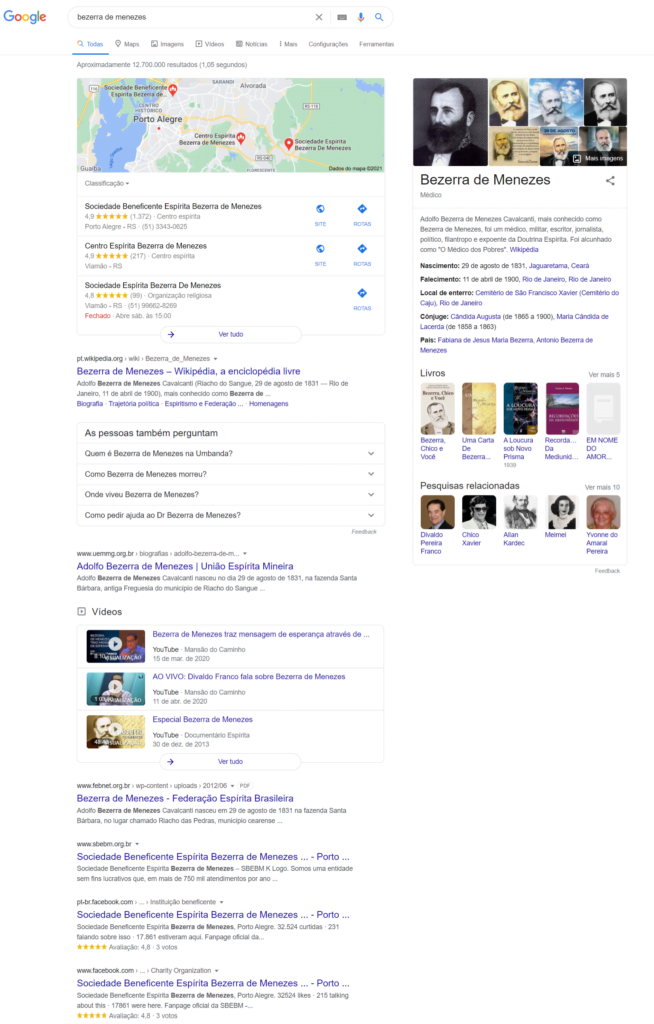
Este resultado de uma busca feita no navegador Edge da Microsoft, usando o Google Brasil, mostra o resultado para o termo “Bezerra de Menezes”.
Perceba que o primeiro resultado, como se era de esperar também é da Wikipedia para a página que fala sobre o Dr. Bezerra. Já o segundo, terceiro e quarto resultados são da Sociedade Beneficente Espírita Bezerra de Menezes, apontando para o site que eu otimizei.
O Gráfico do Conhecimento do Google (Knowledge Graph) ao lado também mostra resultados da casa espírita. O Google está mais avançado no uso dos dados marcados semanticamente e por isso mostra mais dados. Fiz essa busca para isolar a influência da minha navegação e localização nos resultados.
Esse resultado indica as possibilidades do uso da semântica em todos os projetos de site, principalmente os que usam WordPress, por conta da facilidade do uso desses plugins, que ampliam o alcance do SEO.
O resultado que mostrei a vocês foi alcançado em pouco tempo numa palavra que não tem muita concorrência e a quantidade de sites otimizados para ela são poucos.
Mas sei que fica provado o ponto: A marcação semântica do seu conteúdo é um diferencial competitivo do seu site, com toda certeza.
Update de Junho de 2019
Esse é mais um caso de uso de marcação estruturado das entidades. Conseguimos bons resultados para a posição 0 na busca (como visto abaixo) como fonte de conteúdo um verbete (as leis divinas) do Vocabulário criado.
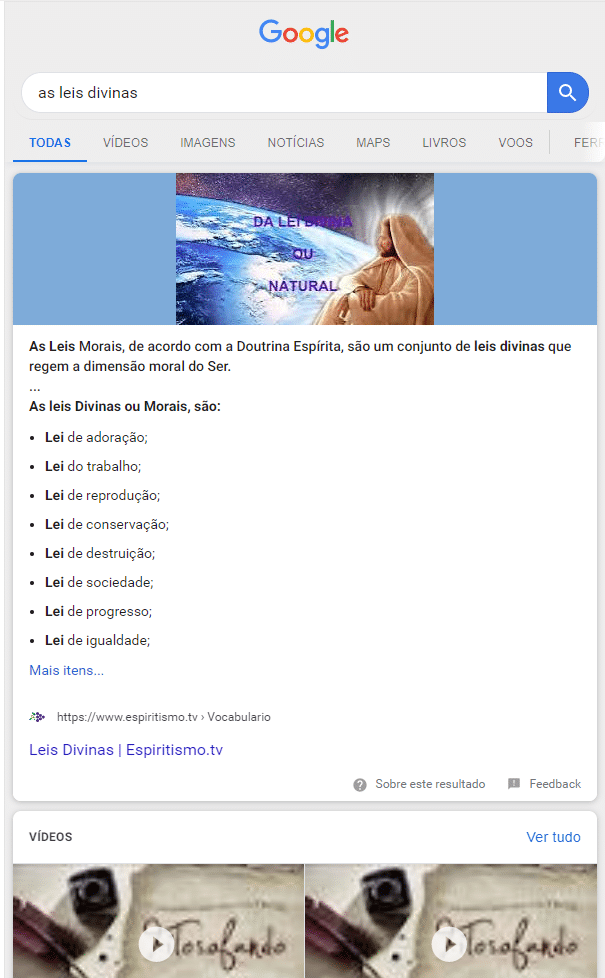
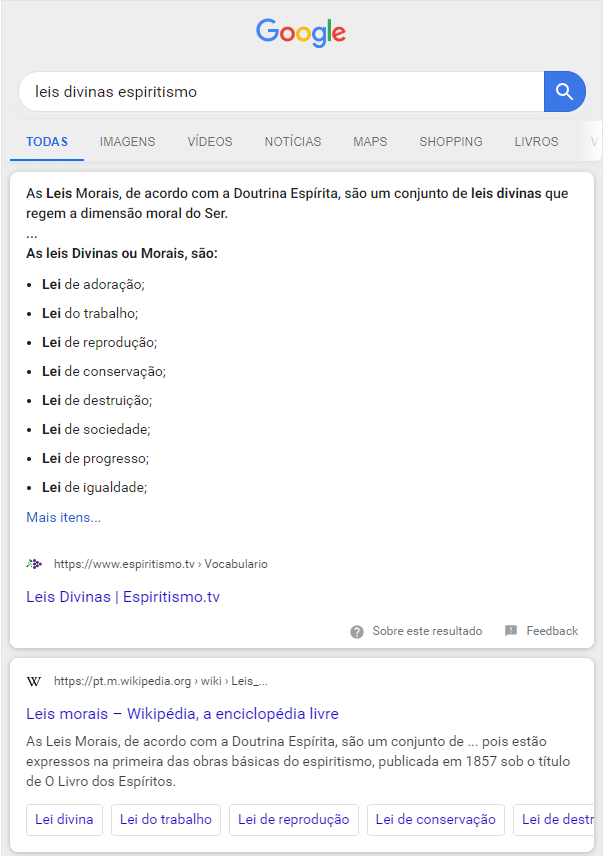
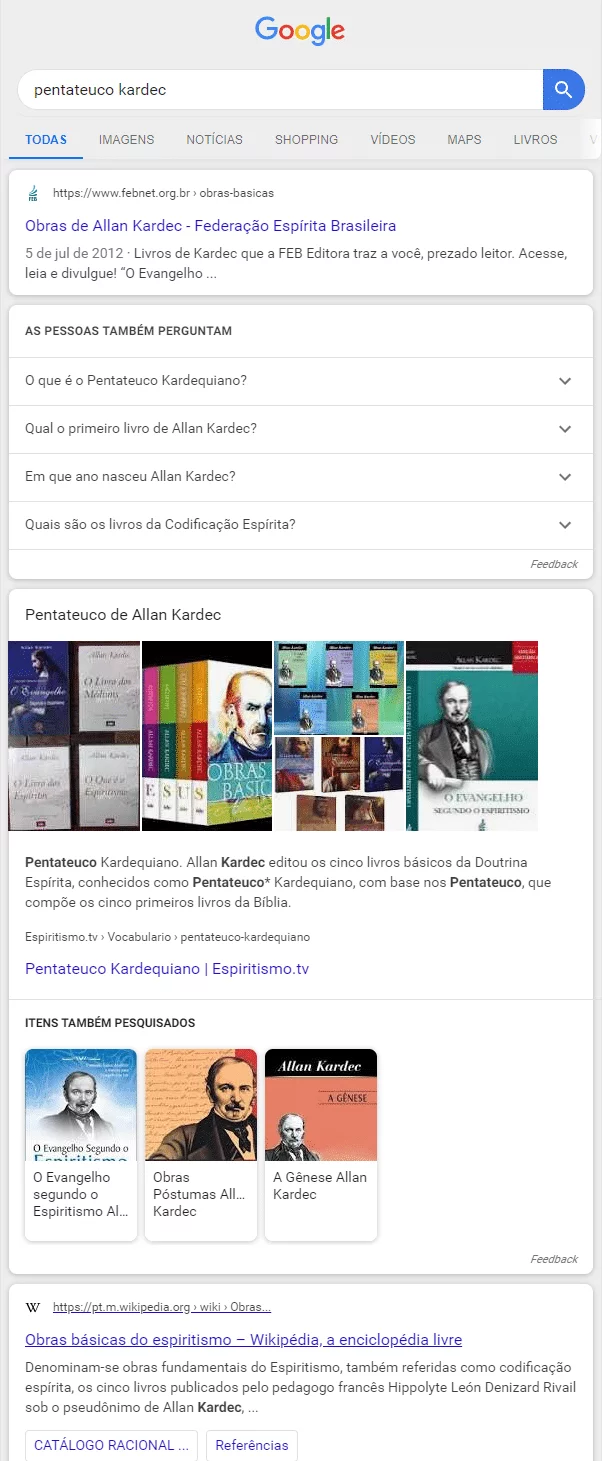
O objetivo é ter performance em mobile.
Otimização Semântica: resultados
Nesta segunda parte da trilha de SEO Semântico mostro alguns resultados que já consegui usando o otimização semântica em 3 tipos de projetos diferentes.
O Poder do SEO Semântico
Como deu para perceber, com o uso correto do conhecimento, planejamento e estratégia dá para alcançar um resultado bastante interessante. O investimento na assinatura do WordLift se paga com o acréscimo de novos visitantes impactados pelos resultados que encontraram na busca.
Claro que dá para fazer parte do trabalho que o WordLift faz com plugins gratuitos, mas a construção do vocabulário é manual e várias funcionalidades não existem.
Mas o que é fundamental para esse meu teste é a validação na prática do SEO semântico.
Esse trabalho ainda está no início e novos e melhores resultados ainda devem surgir conforme continuo a otimização.
Perguntas Frequentes





Publicar comentário